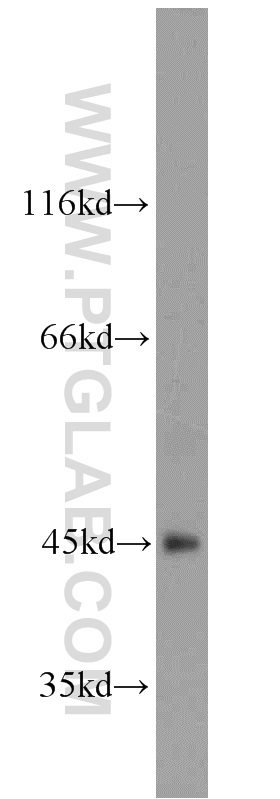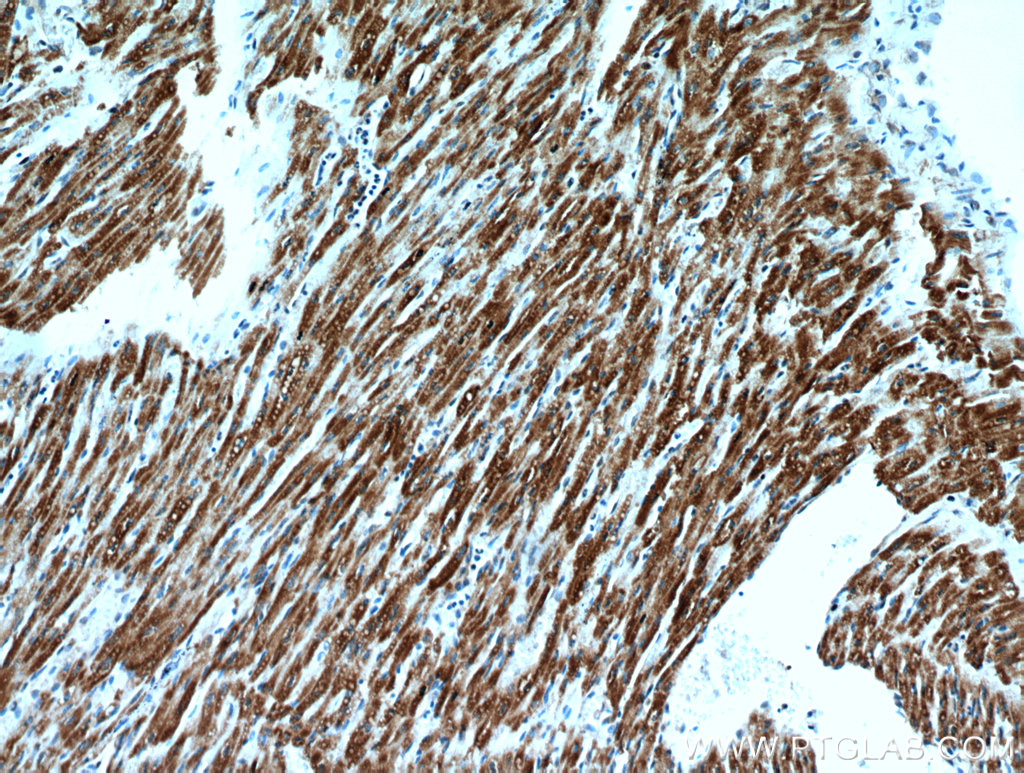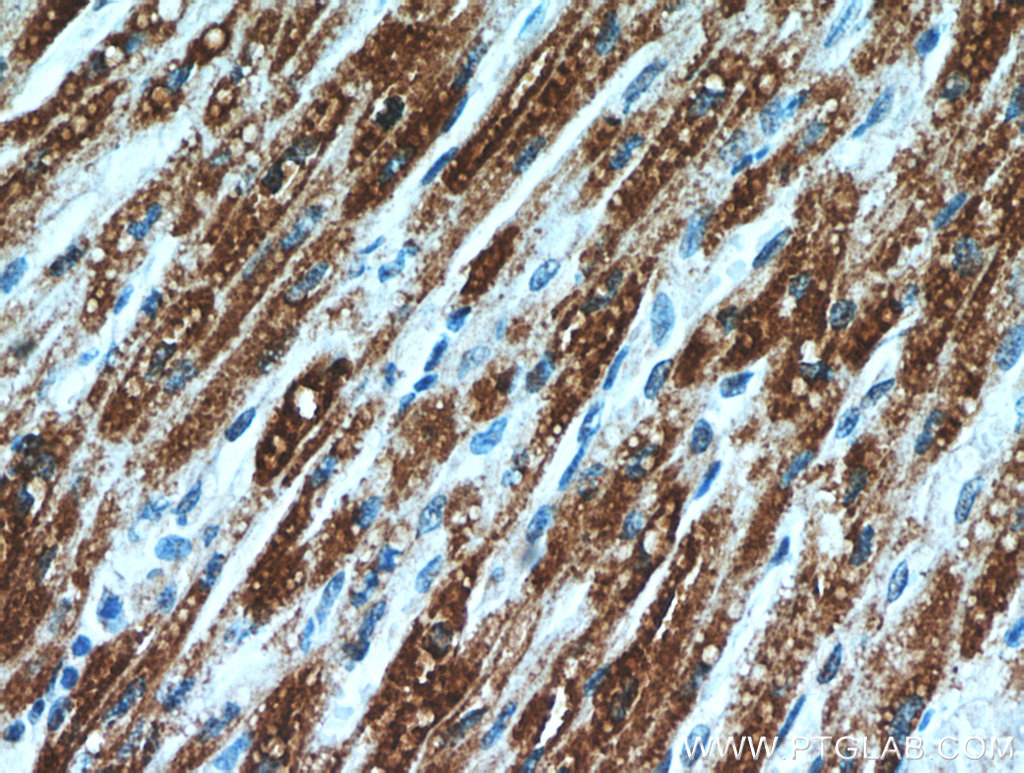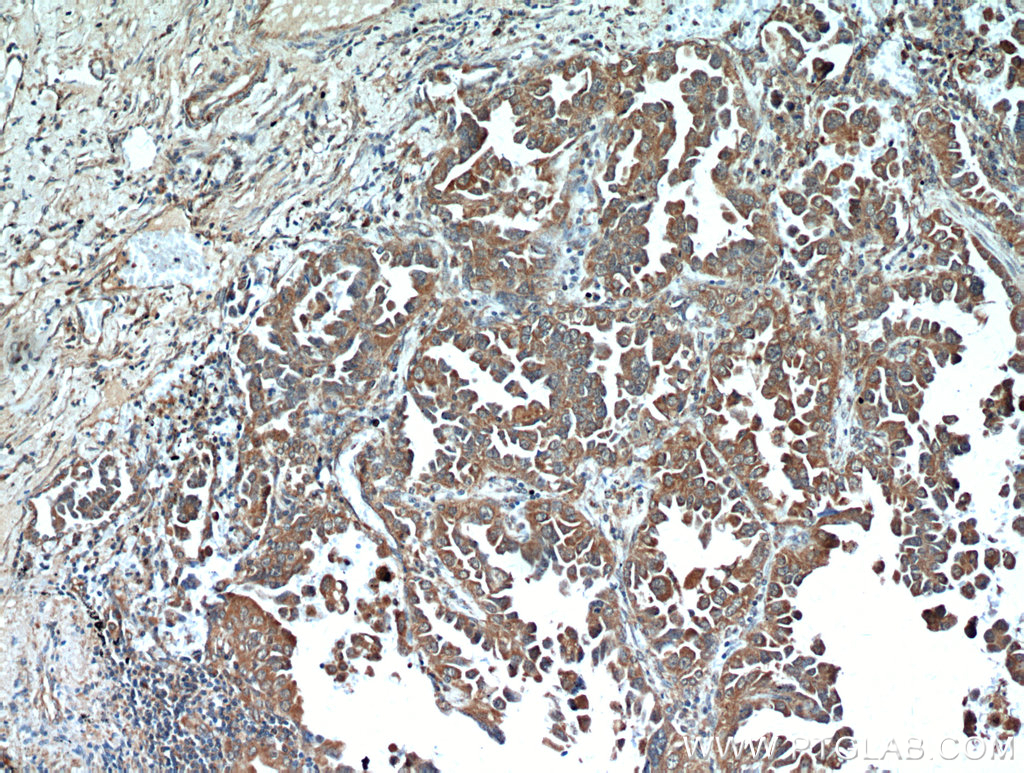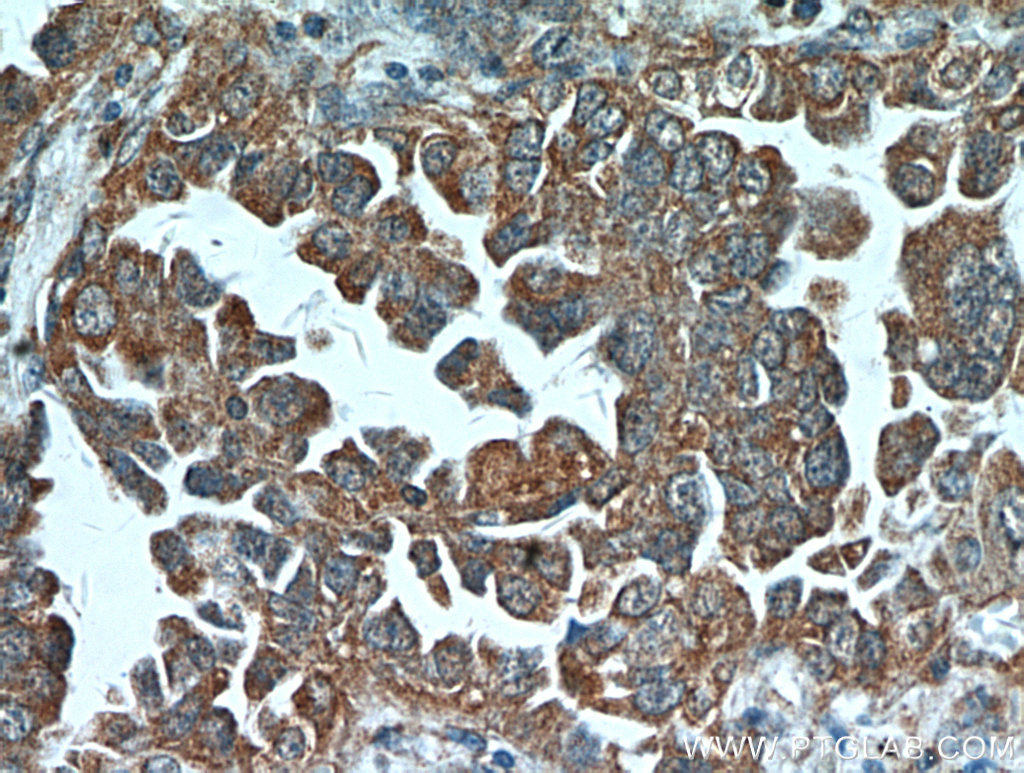验证数据展示
经过测试的应用
| Positive WB detected in | mouse testis tissue |
| Positive IHC detected in | human heart tissue, human lung cancer tissue Note: suggested antigen retrieval with TE buffer pH 9.0; (*) Alternatively, antigen retrieval may be performed with citrate buffer pH 6.0 |
推荐稀释比
| 应用 | 推荐稀释比 |
|---|---|
| Western Blot (WB) | WB : 1:500-1:1000 |
| Immunohistochemistry (IHC) | IHC : 1:20-1:200 |
| It is recommended that this reagent should be titrated in each testing system to obtain optimal results. | |
| Sample-dependent, Check data in validation data gallery. | |
产品信息
11354-1-AP targets ART5 in WB, IHC, ELISA applications and shows reactivity with human, mouse, rat samples.
| 经测试应用 | WB, IHC, ELISA Application Description |
| 经测试反应性 | human, mouse, rat |
| 免疫原 |
CatNo: Ag1786 Product name: Recombinant human ART5 protein Source: e coli.-derived, PGEX-4T Tag: GST Domain: 1-292 aa of BC014577 Sequence: MALAALMIALGSLGLHTWQAQAVPTILPLGLAPDTFDDTYVGCVEEMEEKAAPLLKEEMAHHALLRESWEAAQETWEDKRRGLTLPPGFKAQNGIAIMVYTNSSNTLYWELNQAVRTGGGSRELYMRHFPFKALHFYLIRALQLLRGSGGCSRGPGEVVFRGVGSLRFEPKRLGDSVRLGQFASSSLDKAVAHRFGNATLFSLTTCFGAPIQAFSVFPKEREVLIPPHEVFLVTRFSQDGAQSLVTLWSYNQTCSHFNCAYLGGEKRRGCVSAPGALGTGDLHMTKRHLQQP 种属同源性预测 |
| 宿主/亚型 | Rabbit / IgG |
| 抗体类别 | Polyclonal |
| 产品类型 | Antibody |
| 全称 | ADP-ribosyltransferase 5 |
| 别名 | ADP ribosyltransferase 5, ART5, Ecto ADP ribosyltransferase 5, Mono(ADP ribosyl)transferase 5 |
| 计算分子量 | 292 aa, 32 kDa |
| 观测分子量 | 35-40 kDa |
| GenBank蛋白编号 | BC014577 |
| 基因名称 | ART5 |
| Gene ID (NCBI) | 116969 |
| RRID | AB_10734329 |
| 偶联类型 | Unconjugated |
| 形式 | Liquid |
| 纯化方式 | Antigen affinity purification |
| UNIPROT ID | Q96L15 |
| 储存缓冲液 | PBS with 0.02% sodium azide and 50% glycerol, pH 7.3. |
| 储存条件 | Store at -20°C. Stable for one year after shipment. Aliquoting is unnecessary for -20oC storage. |
背景介绍
ART5 (Ecto-ADP-ribosyltransferase 5) belongs to a class of enzymes that catalyze the transfer of an ADP-ribose group from NAD to arginine residues on target proteins like G proteins. ART5 is a secreted protein. This antibody detects the 43 kDa ART5 protein in mouse liver and testis.
实验方案
| Product Specific Protocols | |
|---|---|
| IHC protocol for ART5 antibody 11354-1-AP | Download protocol |
| WB protocol for ART5 antibody 11354-1-AP | Download protocol |
| Standard Protocols | |
|---|---|
| Click here to view our Standard Protocols |

